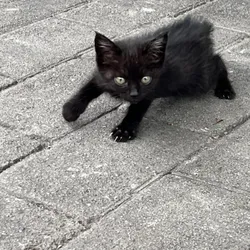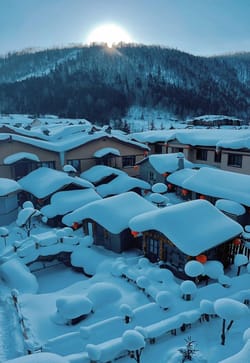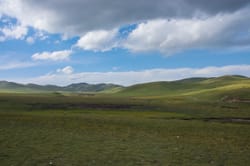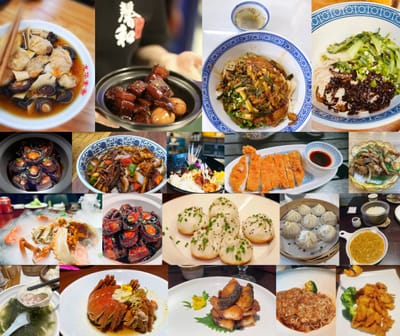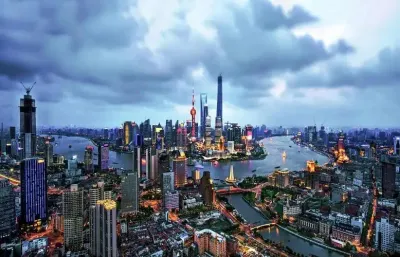On this page
Introduction
East China is a geographial that covers the eastern coastal area of China, including the provinces of Anhui, Fujian, Jiangsu and Zhejiang , as well as the municipality of Shanghai.
Over a thousand years ago, this area was the main terminus of the Maritime Silk Road, and traded extensively with Japan and Southeast Asia. It is also a very important area historically.
Today the region is an economic powerhouse beyond even the Pearl River Delta in South China. Shanghai serves as the regional hub with its international metropolis appeal, while Zhejiang and Jiangsu are renowned for their traditional “Jiangnan” (the southern part of Yangtze River) water town landscapes.
Cities
This region is economically advanced, with numerous modern cities and bustling ports. It is known for its rich cultural heritage, beautiful natural scenery, and thriving tourism industry.
See some famous cities in this area and understand below for details.
Shanghai

Shanghai is China's most developed city and a major center for finance and fashion. It is also one of the world's most populous and important cities. According to Wikipedia's measurements based on UN data, Shanghai ranks as the third largest city in the world, after Tokyo and Delhi. By any measure, it is among the top ten cities globally and is either the largest or second-largest city in China, following Chongqing.
In addition to its modern skyscrapers and bustling commercial districts, Shanghai is known for its rich history and cultural attractions. The historic Bund showcases the city's colonial-era architecture, while Nanjing Road is famous for shopping. Visitors can explore the Shanghai Museum and Shanghai Art Museum for a glimpse of the city's artistic and cultural heritage. Shanghai is also renowned for its unique cuisine, including popular dishes like soup dumplings and pan-fried buns, making it a culinary delight for travelers.
Hangzhou

上有天堂,下有苏杭
Heaven has paradise, Earth has Suzhou and Hangzhou
—Chinese proverb
Hangzhou is located in Zhejiang Province, China. It is one of the country's most important tourist cities, renowned for its natural beauty and rich historical and cultural heritage.
The city's West Lake is its most famous attraction, celebrated for its picturesque lake views and classical gardens. Hangzhou is also well-known for its traditional silk production and Dragon Well tea.
As the political, economic, and cultural center of Zhejiang Province, Hangzhou is a prosperous and highly developed city. It offers a unique blend of modern urban life and ancient cultural charm, making it a captivating destination for visitors.
Nanjing

Nanjing is a renowned historical and cultural city that served as the capital for several dynasties throughout Chinese history. Its name means "Southern Capital" (with Beijing being the "Northern Capital").
Nanjing boasts many historical sites, including the Ming Dynasty's first emperor's tomb, which is a UNESCO World Heritage Site.
In addition to its rich history, Nanjing is known for its beautiful natural scenery, such as the scenic Qinhuai River and the impressive Purple Mountain. The city also offers unique culinary experiences, with traditional dishes like salted duck and soup dumplings that provide a taste of local culture.
Suzhou

Suzhou, also as Soochow, is an important prefecture-level city in Jiangsu Province, China. As part of the Yangtze Delta megalopolis, Suzhou is a major economic center and a hub of trade and commerce.
The city is renowned for its exquisite classical gardens, such as the Humble Administrator's Garden and the Lingering Garden, which are UNESCO World Heritage Sites. Suzhou is also famous for its silk production and traditional crafts, including Su embroidery, one of China’s four famous embroideries. Visitors can enjoy the scenic beauty along the ancient canals and savor local delicacies like Suzhou pastries and crab roe soup dumplings, offering a rich cultural experience.
Wuxi

Wuxi is an industrial city located roughly halfway between Shanghai and Nanjing. With its rich natural and cultural heritage, Wuxi is one of China’s top ten tourist cities.
The area is known for its picturesque rivers and lakes, and Wuxi enjoys some of the most beautiful scenery around Lake Tai.
In addition to its scenic beauty, Wuxi is famous for its traditional silk production, Wuxi ribs, and local snacks. Notable attractions such as the Lingshan Grand Buddha and Yuantou Zhu provide visitors with a rich blend of cultural and natural experiences.
Yangzhou
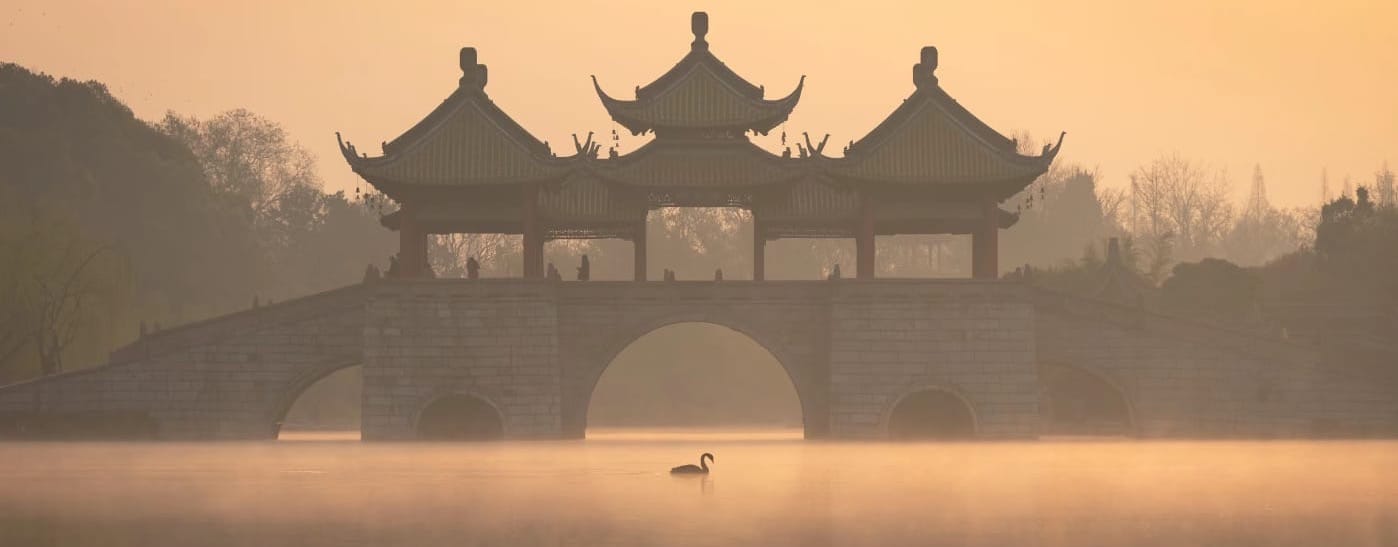
Yangzhou has a history of over 2,500 years. Marco Polo served as the city's governor (or possibly a salt official, or he might have just lived there during that period) for three years in the late 13th century.
Located a few miles north of the Yangtze River, Yangzhou is crisscrossed by a network of canals of various sizes. This city is renowned for its classical gardens and rich cultural heritage, with beautiful traditional gardens like the Slender West Lake and Ge Garden being prime examples. The city is also famous for its exquisite traditional crafts, including Yangzhou lacquerware and embroidery. Yangzhou's cuisine is notable as well, with specialties like Yangzhou fried rice and local dim sum.
Climate
The climate of China’s East China region, which includes cities like Shanghai, Hangzhou, and Nanjing, is characterized by a temperate and humid subtropical climate. This region experiences four distinct seasons:
- Spring (March to May): Spring is mild and pleasant with blooming flowers and gradually warming temperatures. It's a great time to visit as the weather is comfortable and the landscapes are lush.
- Summer (June to August): Summers are hot and humid, with temperatures often reaching above 30°C (86°F). It is also the rainy season, with frequent showers and thunderstorms.
- Autumn (September to November): Autumn brings cooler temperatures and lower humidity, making it an ideal time for outdoor activities. The weather is generally clear and dry, and the fall foliage adds to the scenic beauty.
- Winter (December to February): Winters are relatively mild compared to northern China, with temperatures ranging from 0°C to 10°C (32°F to 50°F). It can be damp and chilly, but snow is rare.
See
Huangpu District (Shanghai)
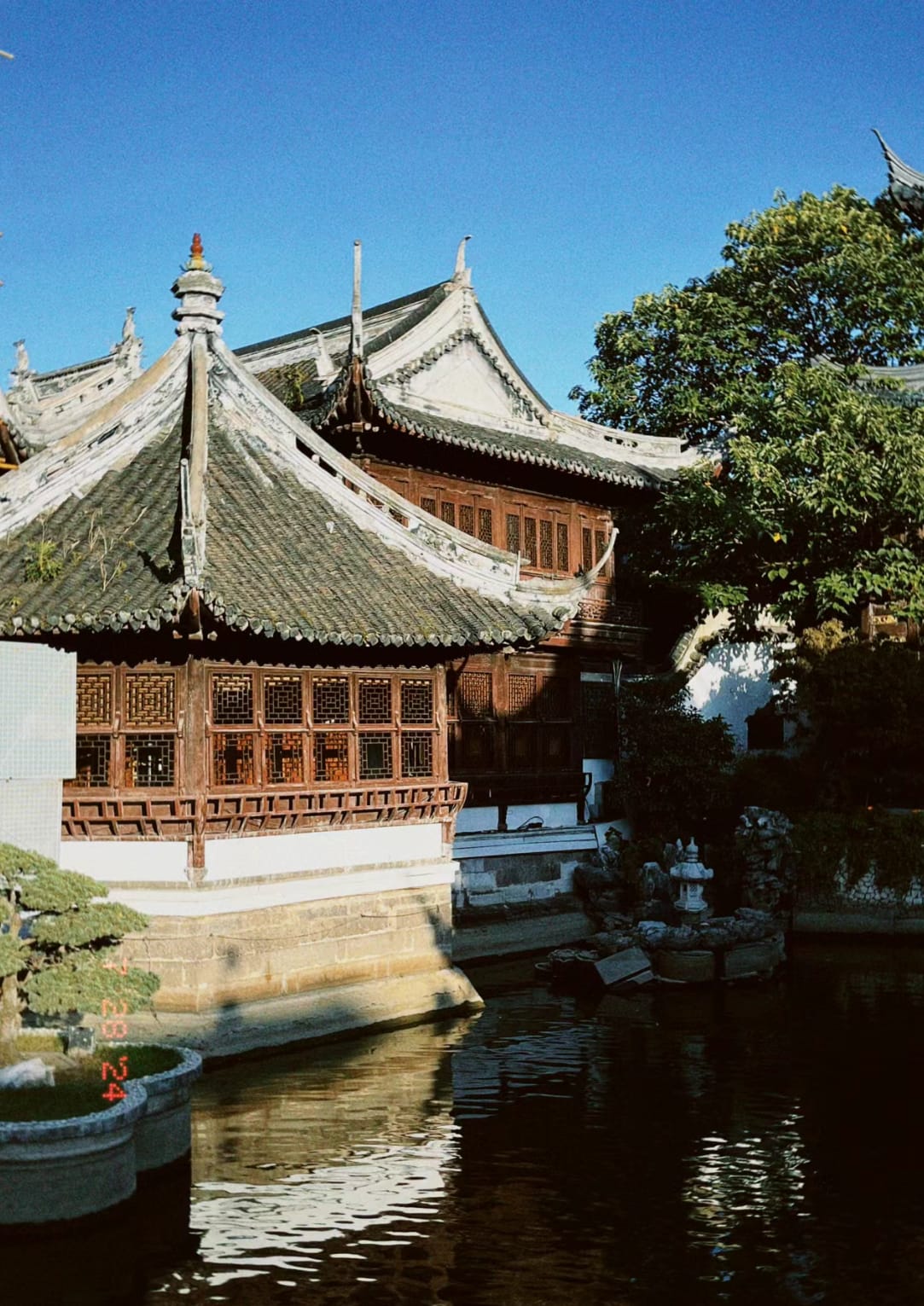



- Yuyuan Gardens
Located in the Old City, Yuyuan Gardens is a historic classical Chinese garden dating back about 1,000 years. It is a central attraction in this major tourist area.
- The Bund
This iconic riverside avenue was the heart of 19th-century Shanghai and remains a prominent tourist spot, offering stunning views of the Huangpu River and historic colonial-era buildings.
- People's Square
Formerly a horse-racing track on the edge of the British district, People's Square is now a large, bustling downtown park. The old clubhouse has been converted into a museum and a fine restaurant. The square also features a major metro hub with Lines 1, 2, and 8 intersecting here. Nearby, you’ll find several high-end malls and department stores.
- Old City
Also known as Nanshi (南市), this area represents Shanghai's original Chinese city, which has been a key tourist destination.
West Lake (Hangzhou)
West Lake is the most famous scenic spot in Hangzhou. Traditionally, visitors come to see the Ten Scenes of West Lake and the Ten New Scenes, with thousands of tourists doing so each year. However, these specific sites can be affected by seasonal changes (such as "Snow on the Broken Bridge"). Instead of trying to check off these sites, it's recommended to spend a clear day strolling around the lake's perimeter and causeways, and taking a ferry to the islands. This way, you'll likely cover most of the notable spots. The lake is quite large, with a circumference of about 12 kilometers.
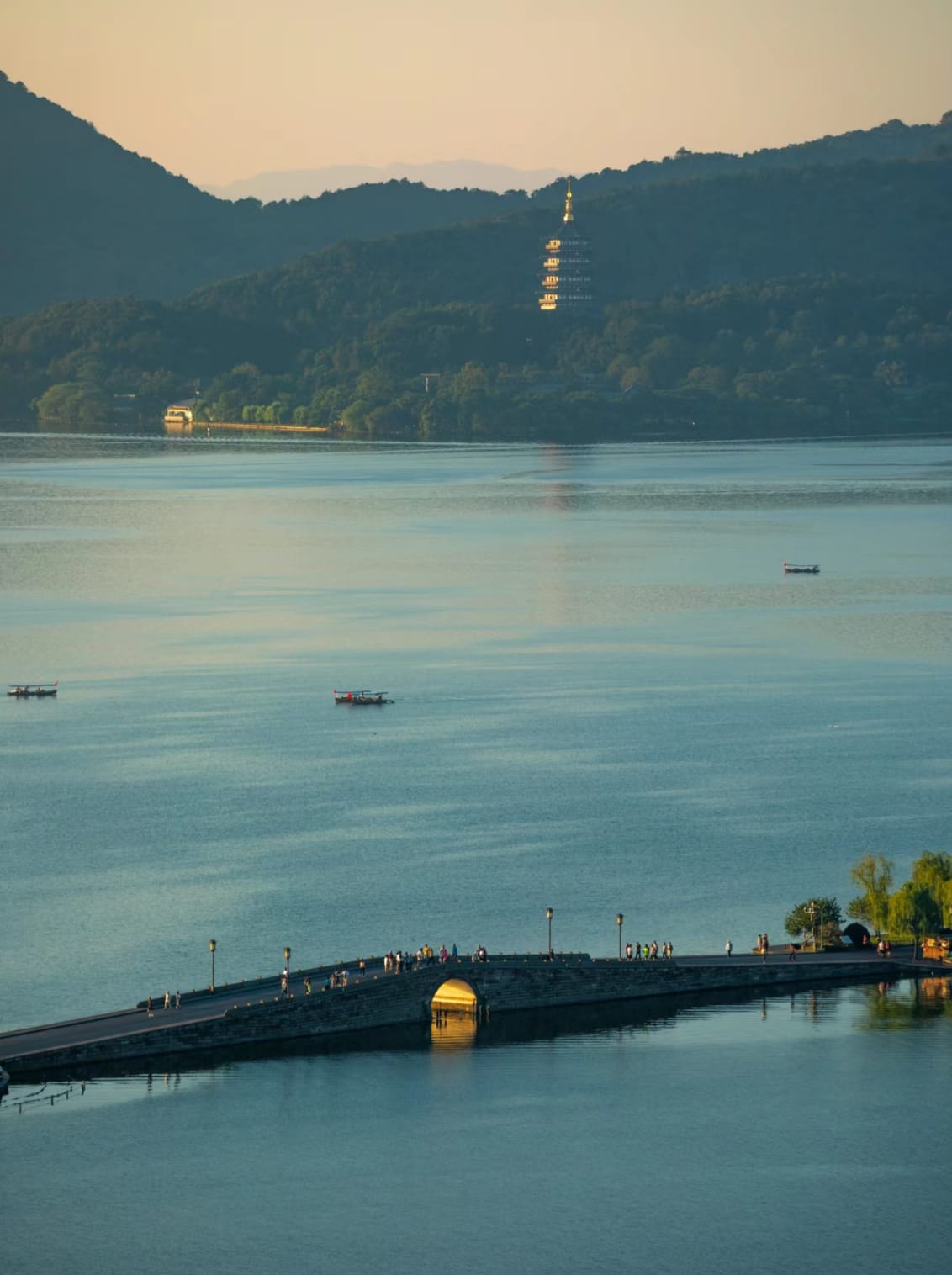
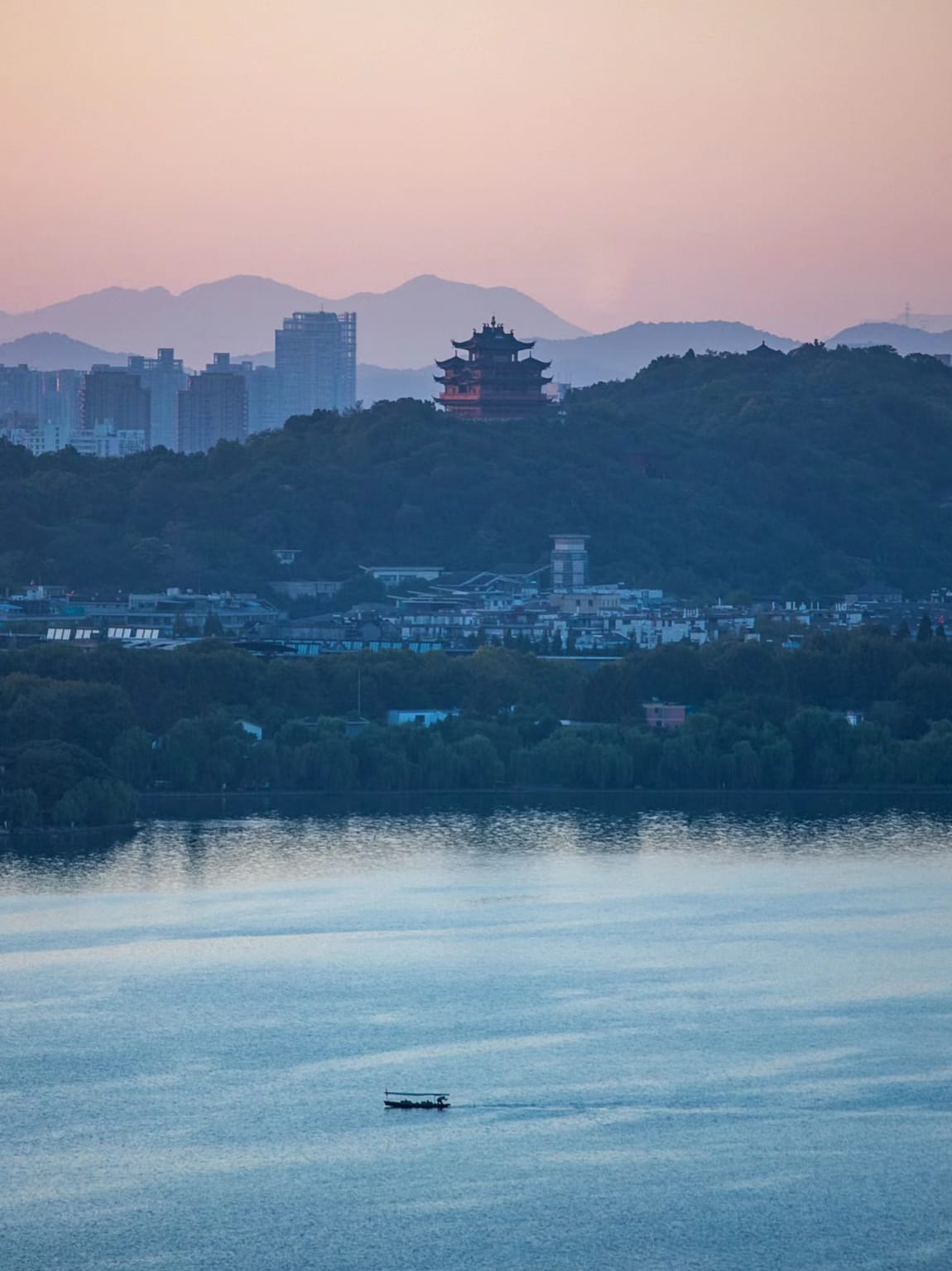

The Ten Scenes of the West Lake include:
- Dawn on the Su Causeway in Spring
Almost 3 km long, the Su causeway dates from the year 1189 and has a bunch of willows and peach trees. It is long north-south causeway that starts by the Shangri-La on Beishan Road and goes all the way down to Nanshan Road.
- Curved Yard and Lotus Pool in Summer
To the west of West Lake, directly in front of the Yue Fei Temple, you will find many shops.
- Moon over the Peaceful Lake in Autumn
A traditional place to see the full moon reflected in the water.
- Snow over the Broken Bridge
The Broken Bridge is the most elegant and romantic site in West Lake. When it is snowing, the hole of the bridge just like the bridge is broken. The classic view of West Lake seen from the Broken Bridge is quite fascinating, and the Legend of the White Snake (a famous Chinese legend which takes place here) also brings this ancient bridge much more charm of culture and history.
- Leifeng Pagoda in the Sunset
The pagoda is lit up at night. It is best viewed from across the lake, for example from the spot indicated here.
- Two Peaks Piercing the Clouds
The view of the highest mountains north and south of the lake, which can rise above the clouds.
- Orioles Singing in the Willows
It is a large park in Qingbomen, where orioles can be heard singing.
- Fish Viewing at the Flower Pond
Its famous points are fishes, flowers and ponds.
- Three Pools Mirroring the Moon
Built in the early 1600s, this is the largest island on the lake. When there is a full moon, candles inside the pagodas are lit, and in the candlelight it appears as though you see the moonlight (if you are romantic enough to see it), hence the name.
- Evening Bell Ringing at the Nanping Hill
A powerful bell in a temple on a mountain, rung at dusk. One does not need to visit the bell, it can be heard across the lake.
Zhongshan Scenic Area (Nanjing)


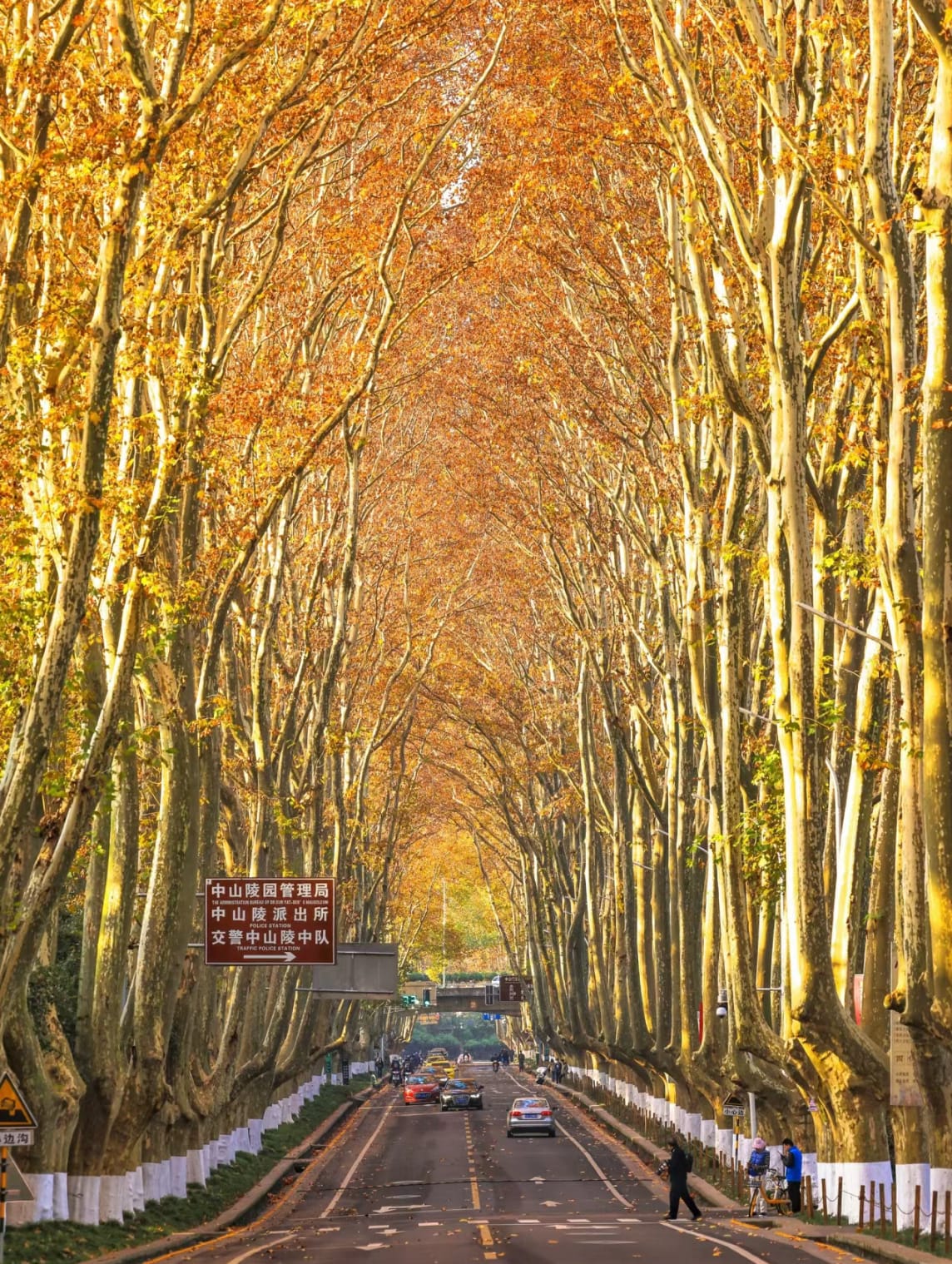
Nanjing’s Zhongshan Scenic Area is a must-visit destination for tourists exploring the city. Located on Zhongshan Mountain, this picturesque area is renowned for its stunning natural beauty and historical significance. The scenic area features several notable attractions, including the Sun Yat-sen Mausoleum, a grand monument dedicated to the founding father of modern China, and the Ming Xiaoling Mausoleum, a UNESCO World Heritage Site that showcases exquisite Ming Dynasty architecture.
Visitors can also explore the serene Linggu Temple, known for its ancient pagoda and peaceful gardens, and take in panoramic views from the top of the mountain. The area is dotted with lush greenery, tranquil lakes, and historic sites, making it a perfect spot for both sightseeing and relaxation. Whether you are interested in history, culture, or natural beauty, Zhongshan Scenic Area offers a rich and rewarding experience.
Confucius Temple (Nanjing)
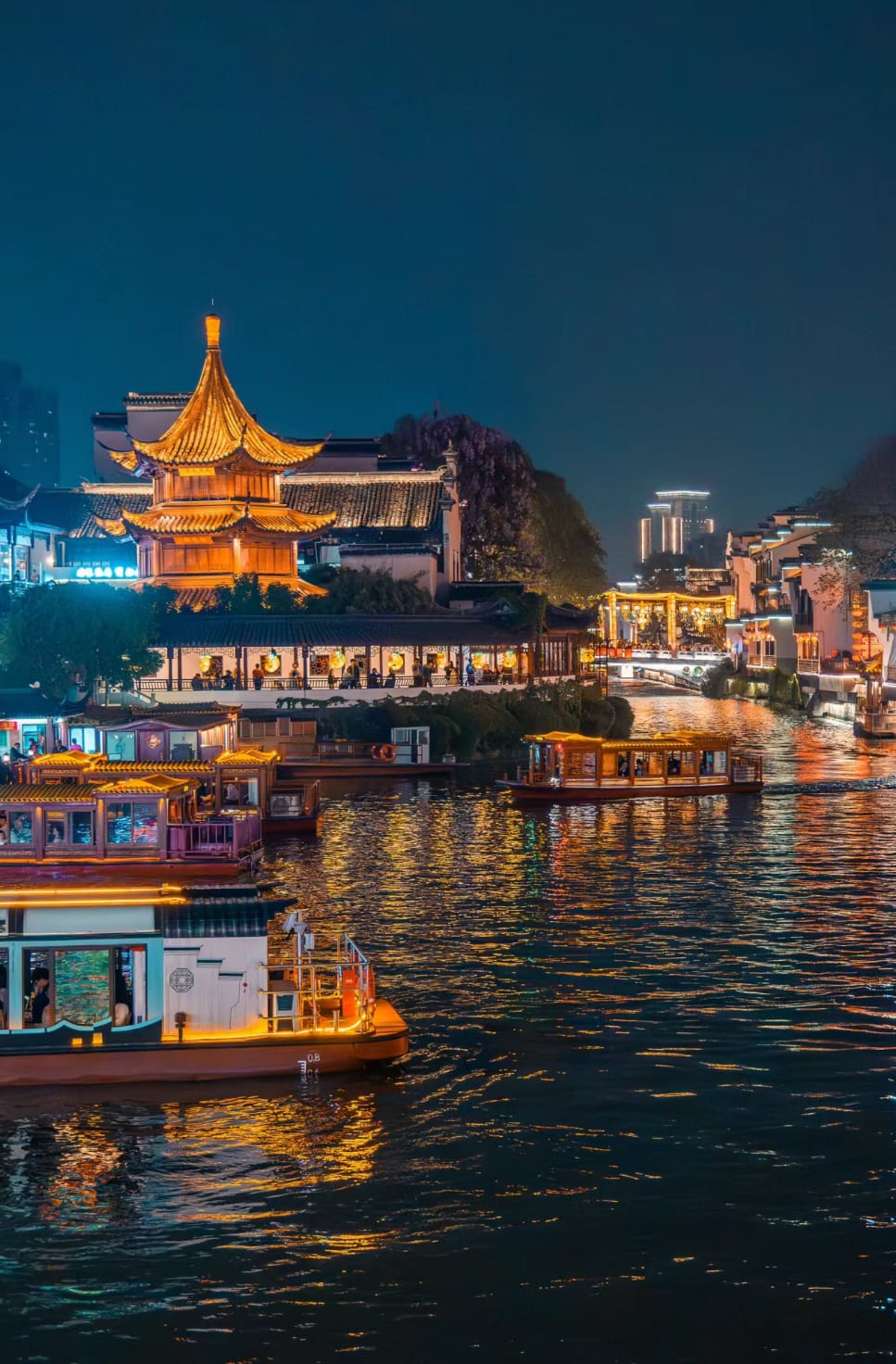
Nanjing’s Confucius Temple, or Fuzimiao, is a historic and vibrant cultural area located along the Qinhuai River. It is dedicated to Confucius, the great Chinese philosopher, and serves as a key landmark in Nanjing.
The Confucius Temple complex includes several important structures, such as the main temple dedicated to Confucius and a series of traditional buildings and courtyards reflecting classical Chinese architecture. The area around the temple is known for its lively atmosphere, with numerous shops, teahouses, and street food vendors offering a taste of local culture and cuisine.
Classical Gardens (Suzhou)
Suzhou’s classical gardens are celebrated worldwide for their exquisite beauty and harmonious design, reflecting the elegance of traditional Chinese garden art. Among these, three of the most famous gardens are the Humble Administrator’s Garden (拙政园), the Lion Grove Garden (狮子林), and the Lingering Garden (留园).



- Humble Administrator’s Garden (拙政园)
This garden is one of the largest and most renowned in Suzhou, dating back to the Ming Dynasty. It features a well-planned layout of lakes, pavilions, and rock formations that create a serene and balanced environment. The garden is known for its elegant water features, intricate rockeries, and charming pavilions, which together form a picturesque landscape reflecting traditional Chinese aesthetics.
- Lion Grove Garden (狮子林)
Famous for its unique and intricate rock formations, Lion Grove Garden is a classic example of Suzhou’s rockery gardens. The garden is renowned for its maze-like arrangement of rock outcrops that resemble lions, offering a playful and mystical experience as visitors navigate through its pathways. The garden also includes beautiful pavilions and serene water features that enhance its tranquil atmosphere.
- Lingering Garden (留园)
This garden is celebrated for its graceful design and historical significance. It features a sophisticated layout of courtyards, halls, and gardens, all designed to create a sense of depth and perspective. Lingering Garden is known for its stunning rockeries, traditional architecture, and scenic views, making it a perfect example of Suzhou’s garden artistry.
Xihui Scenic Area (Wuxi)

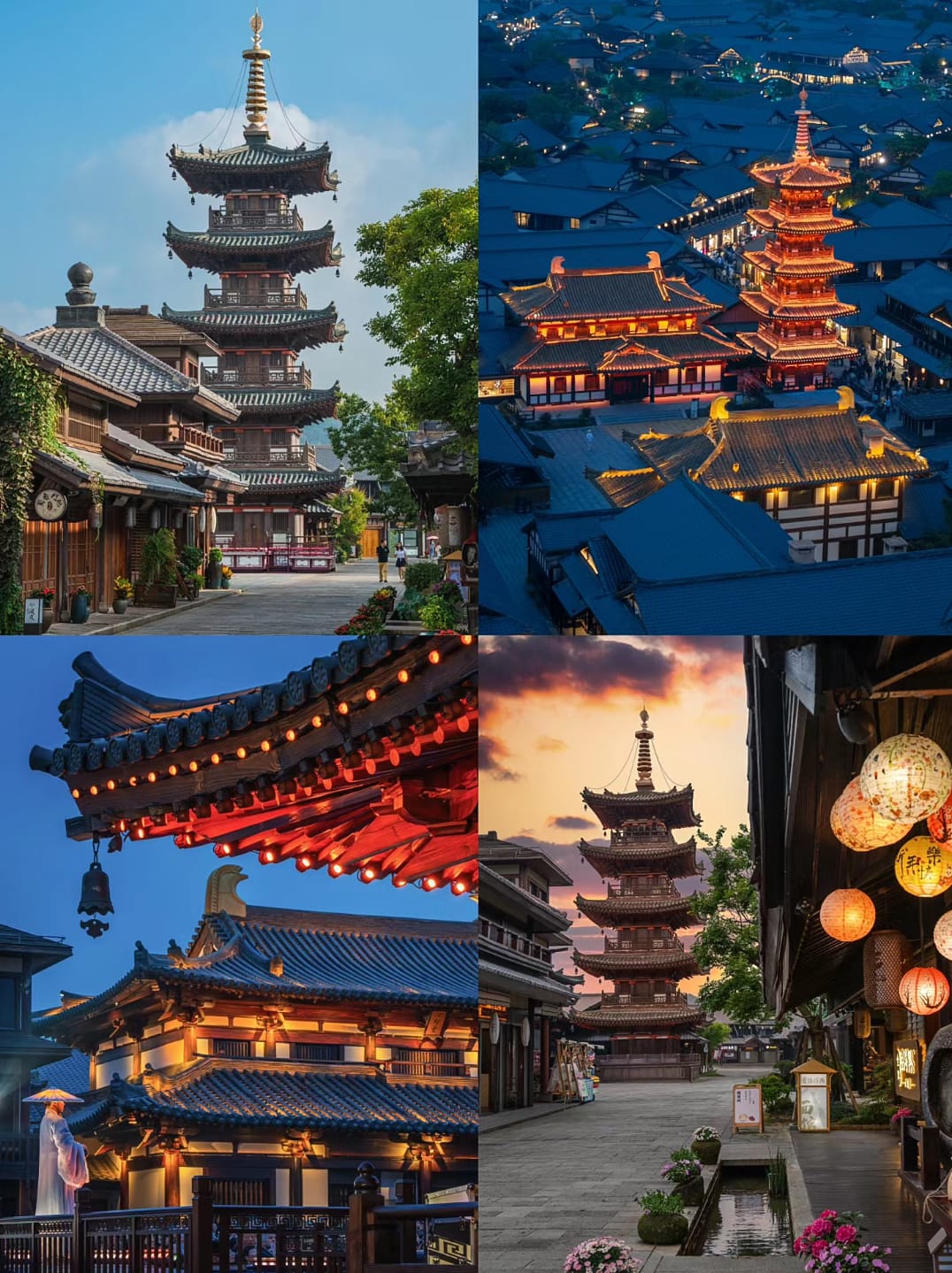

The Xihui Scenic Area, located in the city of Wuxi in Jiangsu Province, is a notable historical and cultural site known for its rich heritage and beautiful landscapes. This area combines historical relics with natural beauty, offering a fascinating glimpse into China’s past.
- Xi Mountain
This ancient mountain is a prominent feature of the Xihui Scenic Area. It is known for its scenic trails and serene environment. Visitors can enjoy panoramic views of Wuxi and the surrounding region from its peaks, making it a popular spot for hiking and photography.
- Hui Mountain
Hui Mountain is another key component of the Xihui Scenic Area, famous for its ancient temples and traditional gardens. The mountain is dotted with historical sites, including ancient stone carvings and well-preserved architecture that reflect the region’s rich cultural history.
- Laozi’s Temple
The temple dedicated to Laozi, the legendary philosopher and author of the Tao Te Ching, is a significant cultural landmark within the Xihui Scenic Area. It offers insights into Taoist philosophy and the historical influence of Laozi on Chinese culture.
- The Wuxi Museum
Located in the area, the Wuxi Museum showcases a variety of artifacts and exhibits related to the history and culture of Wuxi and the surrounding region.
Art

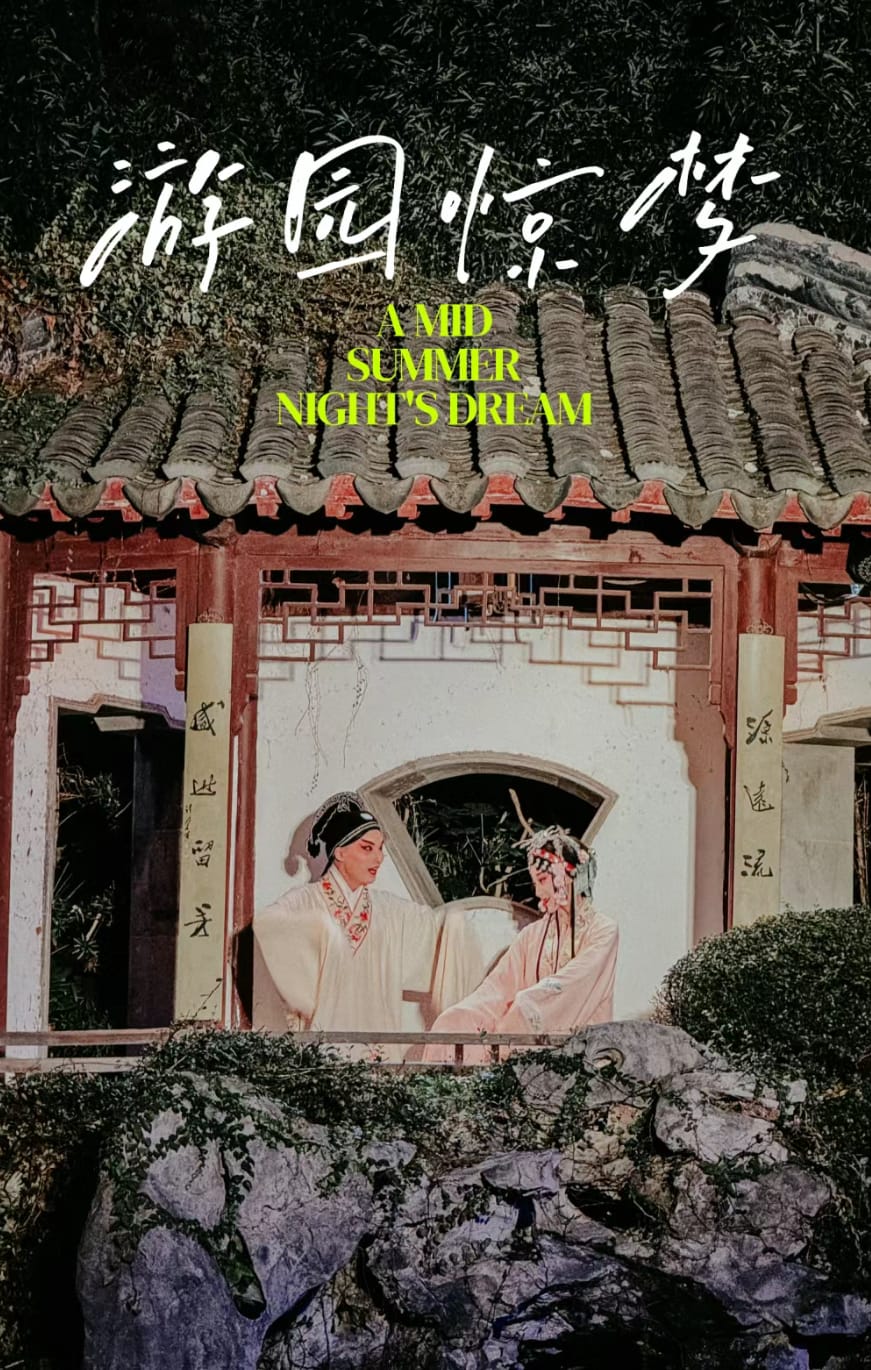

Suzhou Ping Tan
Suzhou Ping Tan, also known as Ping Tan or Suzhou storytelling and singing, is a traditional art form from Suzhou that combines storytelling with music. It is known for its expressive and lyrical performances.
- Characteristics: Ping Tan features a blend of narrative singing and recitation, accompanied by traditional Chinese instruments such as the pipa (a pear-shaped lute) and sanxian (a three-stringed instrument). Performers use a soft, melodious vocal style to tell stories of historical events, folklore, or romantic tales.
- Cultural Significance: Suzhou Ping Tan is a cherished part of Suzhou’s cultural heritage, offering a glimpse into traditional Chinese storytelling and music.
Kunqu Opera
Kunqu Opera is one of the oldest and most refined forms of Chinese opera, originating from the Kunshan region near Suzhou.
- Characteristics: Kunqu Opera is known for its graceful movements, elaborate costumes, and poetic lyrics. It combines singing, acting, and dance, with a focus on elegant and refined expressions. The music features traditional instruments like the bamboo flute and the stringed guqin.
- Cultural Significance: As a UNESCO Intangible Cultural Heritage, Kunqu Opera is a treasured element of China’s cultural history, representing the sophistication and artistry of traditional Chinese theater.
Yue Opera
Yue Opera, also known as Shaoxing Opera, is a popular form of Chinese opera originating from Shaoxing in Zhejiang Province, though it has a significant presence in nearby regions, including Hangzhou.
- Characteristics: Yue Opera is characterized by its melodious singing style, lively performances, and a focus on female roles. It features vibrant costumes and elaborate makeup, with stories often drawn from historical tales, folklore, and classical literature.
- Cultural Significance: Yue Opera has a large following and is celebrated for its unique style and contribution to Chinese performing arts. It offers an engaging way to experience traditional Chinese theater and music.
Eat
Shanghai Cuisine
Shanghai cuisine, also known as Benbang cuisine, is renowned for its rich and flavorful dishes that highlight the use of fresh ingredients and subtle seasonings. This regional cuisine is characterized by its emphasis on sweet and savory flavors, with dishes often featuring a delicate balance of sugar and soy sauce. Signature dishes include the famous Shanghai soup dumplings (xiaolongbao), which are steamed buns filled with savory pork and a rich, flavorful broth. Another popular dish is braised pork belly (hongshaorou), which is slow-cooked to achieve a tender, melt-in-your-mouth texture with a glossy, caramelized sauce. Shanghai cuisine also features a variety of seafood and vegetables, showcasing the region's bountiful resources. For an authentic taste of Shanghai, be sure to explore its diverse and delectable local dishes.
Here are some classic examples of Shanghai's signature snacks:
- xiǎolóngbāo (小笼包, lit. buns from the little steaming cage; fig. steamed dumpling).
Probably the most famous Shanghai dish: small steamed buns — often confused for dumplings — come full of tasty (and boiling hot!) broth inside with a dab of meat to boot. The connoisseur bites a little hole into them first, sips the broth, then dips them in dark vinegar to season the meat inside.
- shēng jiān mántóu (生煎馒头, lit. raw, fried buns).
Unlike steamed buns, these larger buns come with dough from raised flour, are pan-fried until the bottoms reach a deliciously crispy brown, and have not made their way to Chinese menus around the world (or even around China). Still popular with Shanghainese for breakfast and best accompanied by vinegar, eat these with particular care, as the broth inside will squirt out just as easily as their steamed cousins.
Hangzhou Cuisine
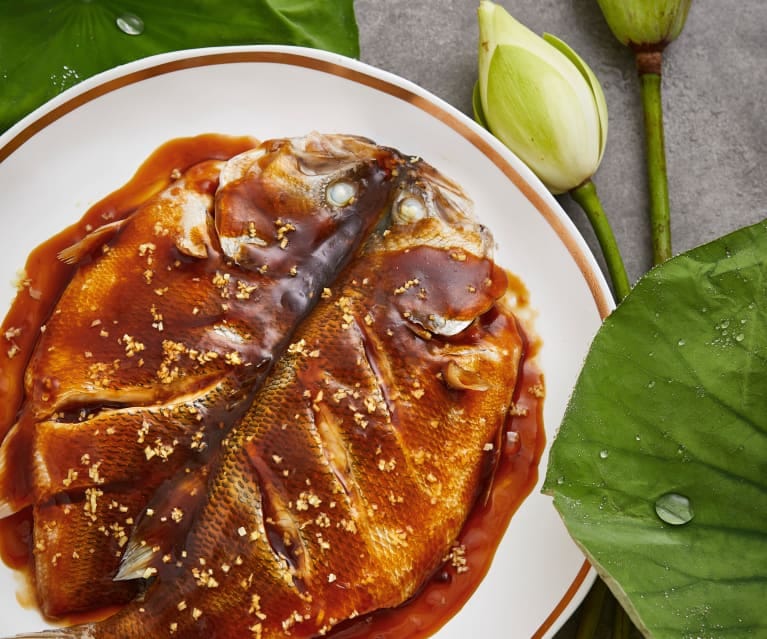
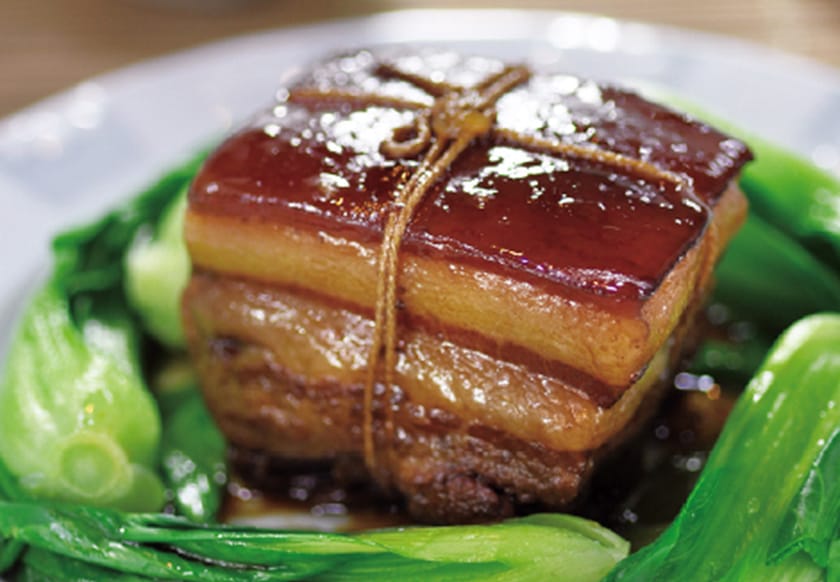
- West Lake Vinegar Fish (西湖醋鱼)
West Lake Vinegar Fish is a famous dish from Hangzhou, known for its delicate balance of flavors. This traditional dish features fresh fish from West Lake, which is cooked in a tangy and slightly sweet vinegar sauce. The sauce, made with rice vinegar and sugar, complements the fish's tender meat, creating a harmonious blend of sour and sweet tastes. West Lake Vinegar Fish is a local delicacy that showcases the region's culinary artistry and is a must-try for visitors to Hangzhou.
- Dongpo Pork (东坡肉)
Dongpo pork, also known as Dongpo meat, is a famous Hangzhou dish made by first pan-frying and then red-cooking pork belly. The pork is typically cut into thick, approximately 5 cm (2 inches) squares, with an even distribution of fat and lean meat, and the skin is retained. The dish features tender and juicy meat with a slightly crispy exterior, while the texture is rich but not overly greasy. Its unique flavor comes from slow braising, which infuses the pork with a delightful blend of wine aroma and subtle sweetness. Named after the renowned Song Dynasty poet and gourmet Su Dongpo (Su Shi), Dongpo pork is a classic delicacy in Hangzhou that offers a rich taste of local culinary tradition.
Nanjing Cuisine
Nanjing cuisine, also known as Jing-Su or Jinling cuisine, is a branch of Jiangsu cuisine renowned for its meticulous preparation, emphasis on preserving natural flavors, and distinct seasonal characteristics. It is particularly famous for its dishes featuring goose and duck. Some well-known local restaurants where you can experience authentic Nanjing cuisine include Nanjing Dapaidang and Ma Xiangxing Restaurant.
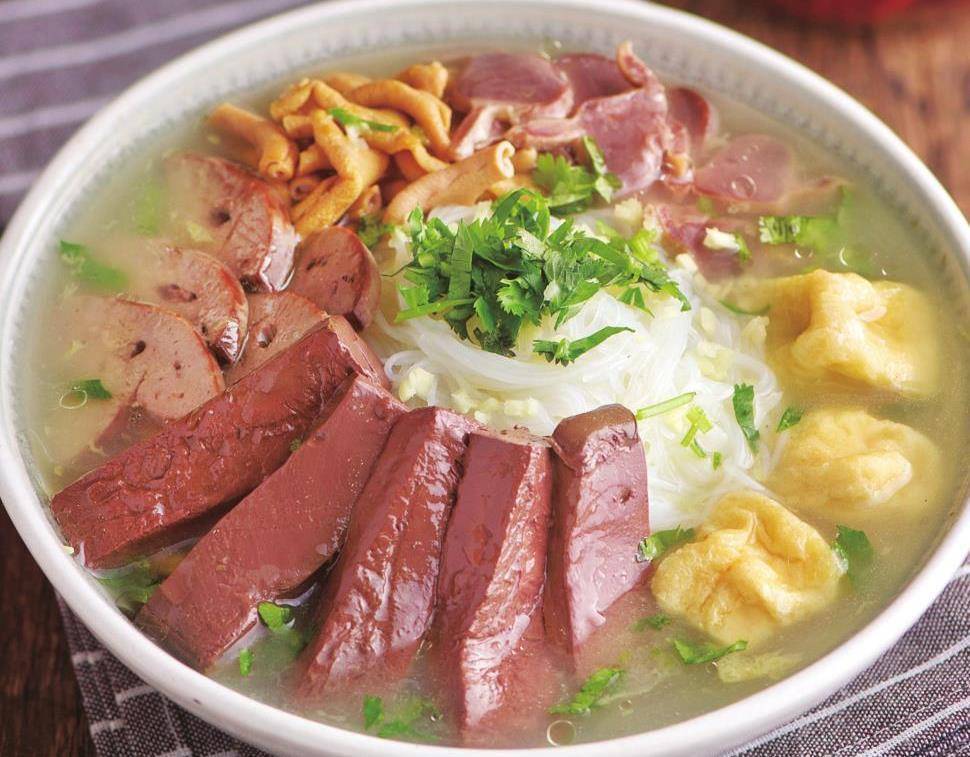
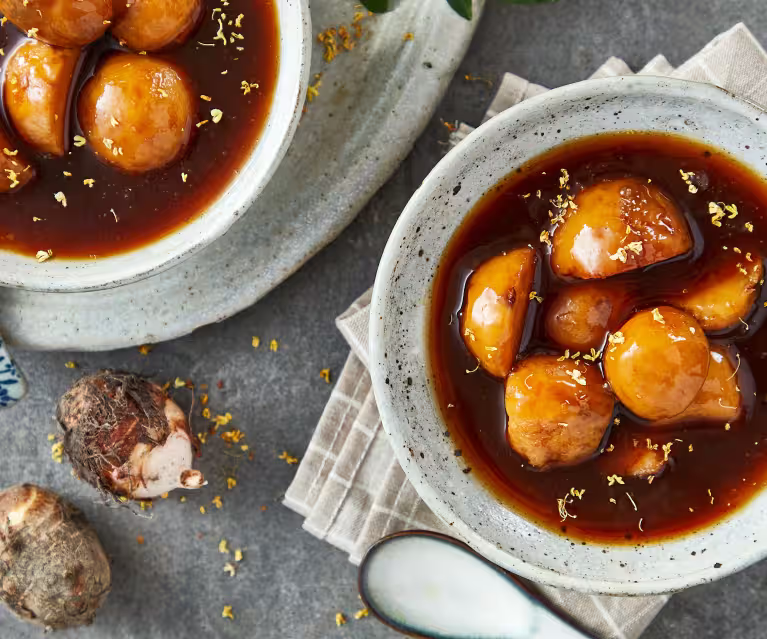

- Salted Duck (盐水鸭)
Nanjing’s famous salted duck is known for its tender, flavorful meat and distinctive taste. The duck is marinated in a mixture of salt, spices, and herbs, then steamed or boiled until it’s perfectly cooked. The result is a savory, aromatic duck with a slightly salty flavor that highlights the traditional curing methods of Nanjing cuisine.
- Duck Blood and Vermicelli Soup (鸭血粉丝汤)
This is a beloved local soup featuring thinly sliced duck blood, soft vermicelli noodles, tofu, and various vegetables in a clear, savory broth. The duck blood provides a unique texture and taste, while the vermicelli noodles absorb the rich flavors of the broth. It’s a comforting and warming dish, perfect for a light meal or a snack.
- Sweet Osmanthus Taro (桂花糖芋苗)
This dessert features taro balls that are steamed and then coated in a sweet osmanthus syrup. The taro balls are soft and chewy, with a subtle taro flavor, and are complemented by the fragrant and slightly sweet osmanthus syrup. It’s a delicately flavored dessert that highlights the use of osmanthus flowers, a signature ingredient in many traditional Chinese sweets.
Suzhou Cuisine
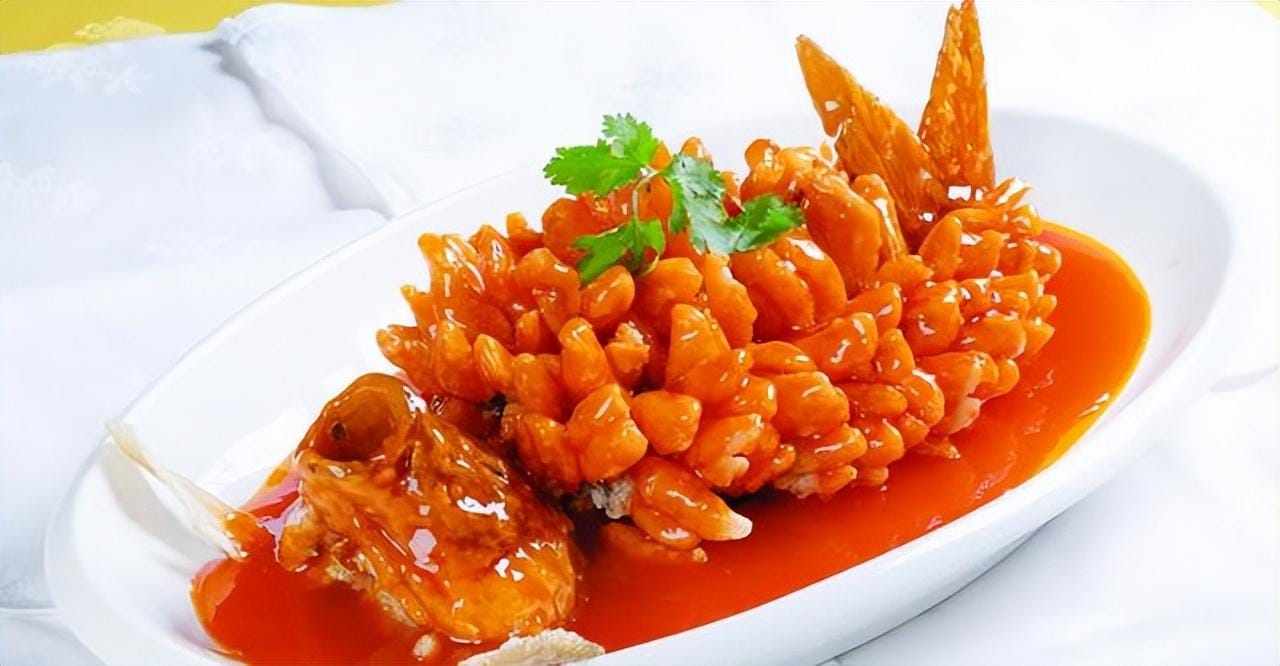
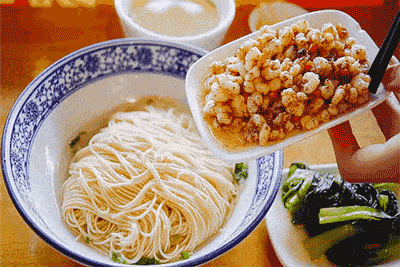

- Squirrel Fish (松鼠桂鱼)
Squirrel Fish, also known as Mandarin Fish or Taihu Fish, is a renowned dish made from this delicate freshwater fish. The preparation involves removing the spine, scoring the fish with a diamond pattern down to the skin, and coating it with dry starch. The fish is then twice-fried in hot pork lard, resulting in a golden, crispy exterior that resembles a squirrel’s fur, with the fish’s head raised and mouth open, and its tail slightly curved.
When hot, a savory sauce is poured over the fish, creating a sizzling sound reminiscent of a squirrel’s chatter. Known for its appealing color, aroma, flavor, and presentation, Squirrel Fish is considered one of the signature dishes of Su cuisine, offering a delightful culinary experience for visitors.
- Su-style noodle (苏式汤面)
Su-style noodle is a traditional dish in Suzhou. It is a combination of soup, noodles, and toppings.
There are two types of soup for Su-style noodles: red soup and white soup. Both types of soup start with a slowly cooked base soup. For noodles, the most important thing is to control the softness and hardness. They may be too mushy after being cooked too long or may be hard if they are not cooked long enough. You must tell the cook what level you want in advance, otherwise, it will depend on the cook. The toppings refer to the dishes eaten with noodles and they are rich in variety. Toppings almost cover the recipe of the Su Bang cuisine, such as Zhu Hongxing's stuffed hoof, Wufangzhai's five-spice ribs, Songhelou's braised duck, Huang Tianyuan's eel, and common braised eel meat, stir-fried meat, pork ribs, shrimps, stir-fried vegetarian with hot sauce, and more.
Wuxi Cuisine
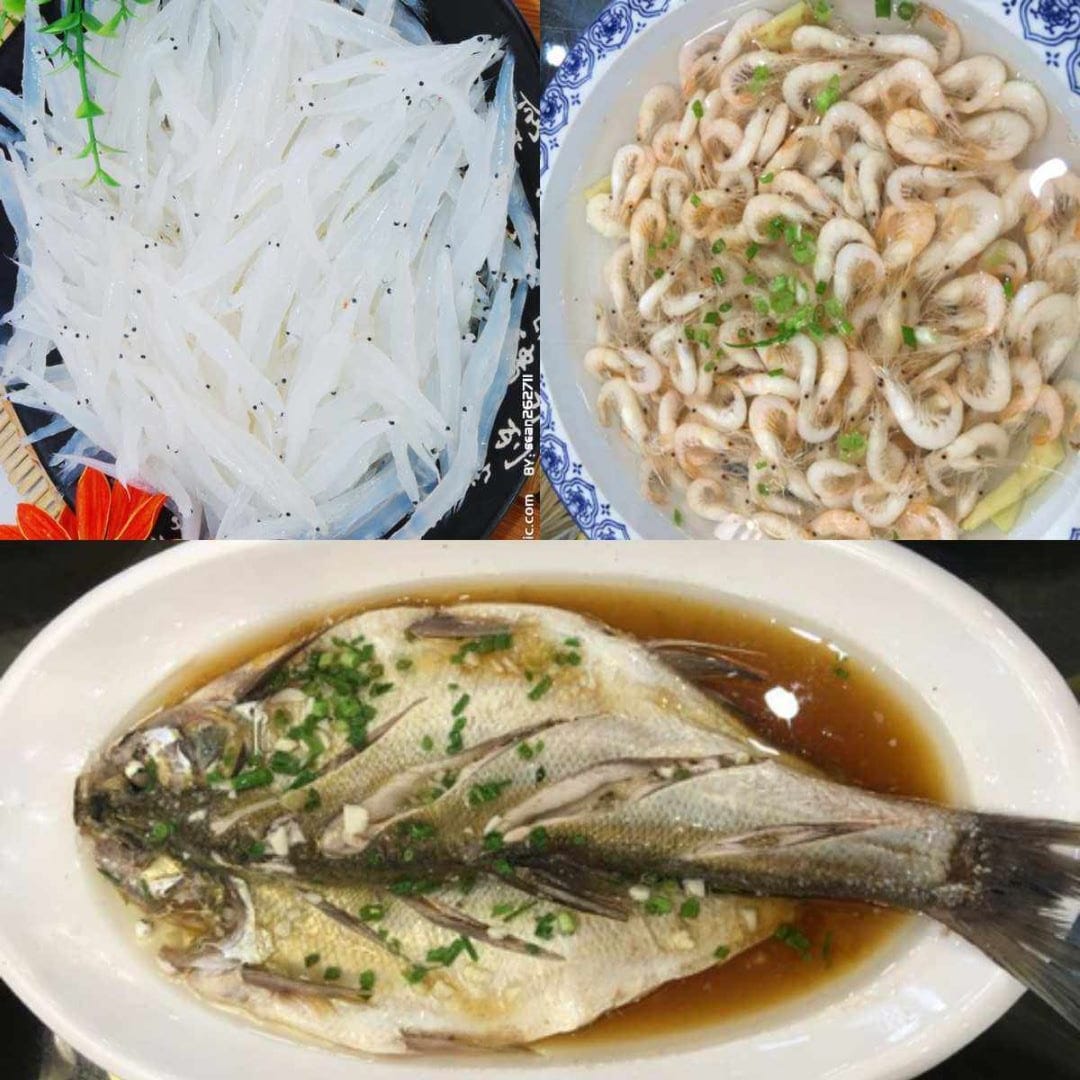

- Wuxi Spare Ribs (无锡排骨)
This dish is a local favorite, known for its tender and flavorful pork ribs. The ribs are typically marinated in a savory and slightly sweet sauce made from soy sauce, sugar, and various spices. After being braised until tender, they are often caramelized to achieve a glossy, rich finish. The result is a deliciously sweet and savory dish with a melt-in-your-mouth texture that highlights the best of Wuxi's culinary traditions.
- Three Whites of Taihu Lake (太湖三白)
This refers to three types of fresh, white fish and seafood from Taihu Lake, known for their delicate flavors and high quality:
- White Fish (白鱼): A tender, flaky fish with a mild flavor.
- White Shrimp (白虾): Small, succulent shrimp known for their sweet taste and firm texture.
- Whitebait (白贝): Tiny, tender fish often used in various dishes or enjoyed simply steamed or stir-fried.
Yangzhou Cuisine

Do you know the iconic dish Yangzhou Fried Rice in the classic animation "Shokugeki no Soma" (known as "Chinese Gourmet Master" in Chinese)? This famous dish officially originates from Yangzhou, China.
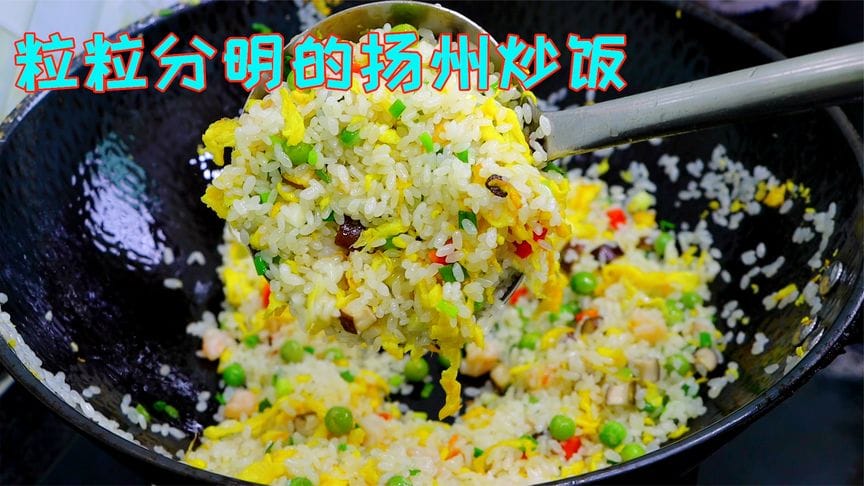
Yangzhou Fried Rice is a renowned Chinese dish known for its vibrant flavors and colorful presentation. Originating from Yangzhou, a city in Jiangsu Province, this fried rice is a popular choice for both locals and visitors.
The dish typically features fragrant, stir-fried rice mixed with a variety of fresh ingredients, including shrimp, pork, and vegetables such as carrots, peas, and scallions. It’s seasoned with soy sauce and often garnished with eggs for added richness. The combination of these ingredients creates a flavorful, satisfying meal that’s both delicious and visually appealing. Yangzhou Fried Rice embodies the essence of Chinese culinary traditions and is a delightful treat for anyone exploring the region.
Drink
Longjing Tea
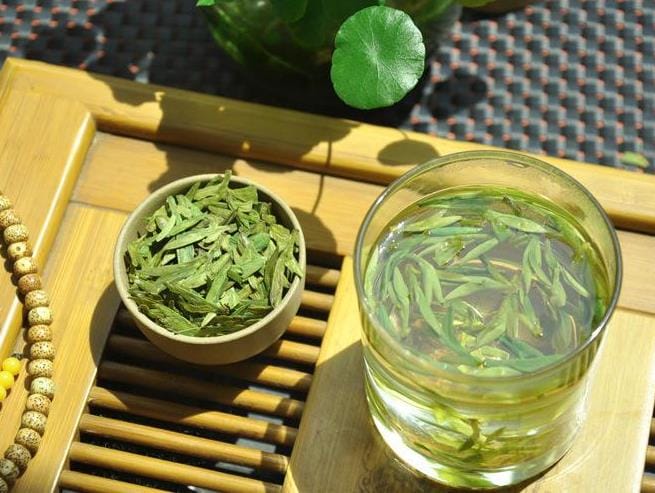
West Lake Longjing is one of Hangzhou's most famous teas and is recognized as one of China's most renowned green teas. It ranks first among China’s top ten teas, with the authentic West Lake Longjing coming from the area around Hangzhou's West Lake. Due to brand protection issues, tea farmers throughout Zhejiang Province have begun calling their flat-leaf teas Longjing. To address this, it has been decided that tea produced outside Hangzhou will be labeled as "Zhejiang Longjing," while high-quality teas from the West Lake area will be designated as "West Lake Longjing."
The finest Longjing tea is picked before the Qingming Festival, and new tea brewed with water from the Tiger Spring is especially highly praised.
Biluochun Tea
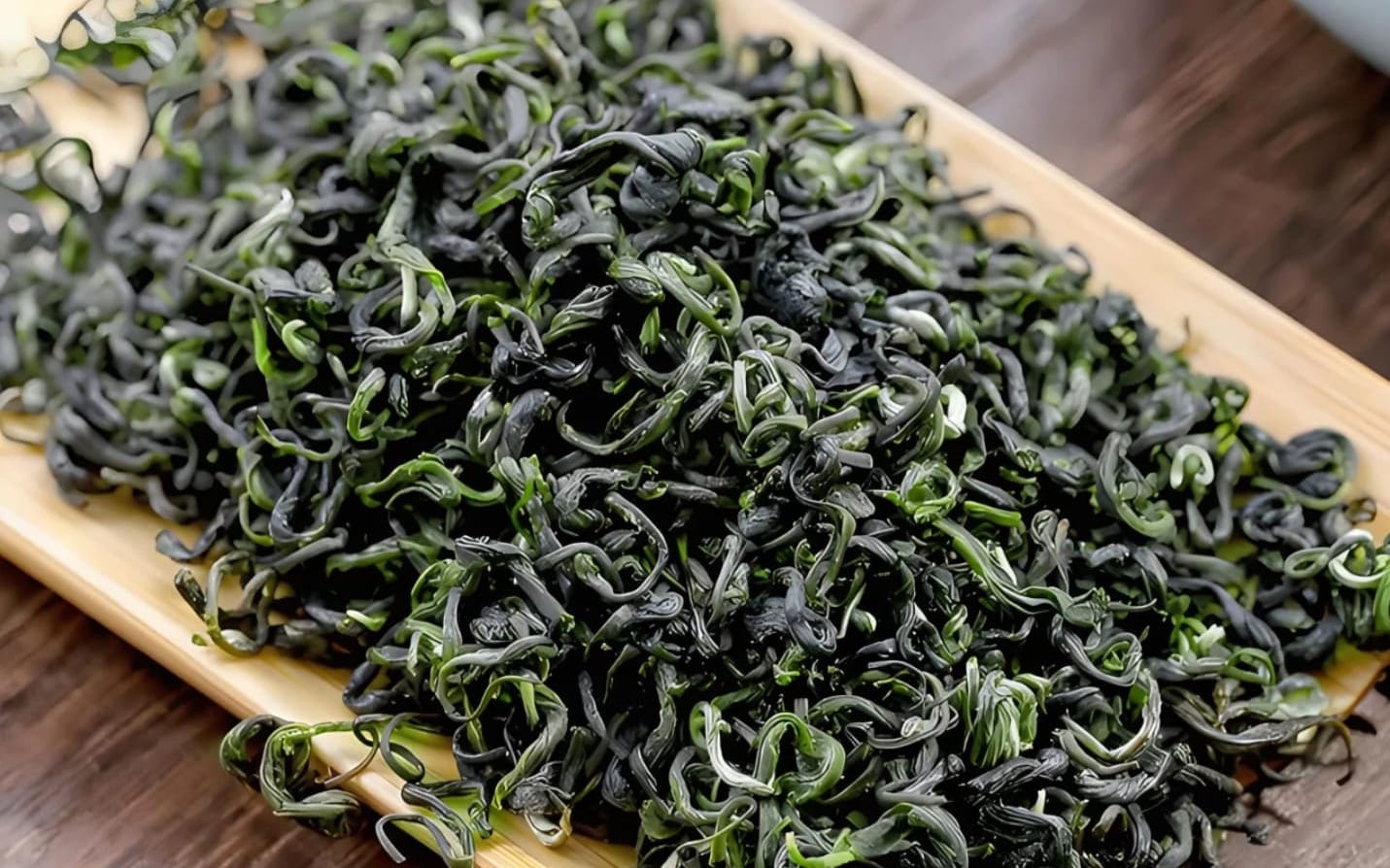
Biluochun is one of Suzhou’s most famous green teas, renowned for its delicate flavor and aromatic fragrance. The name "Biluochun" translates to "Green Snail Spring," reflecting the tea’s appearance and seasonal origins. It is known for its tightly rolled, spiral-shaped leaves that resemble snails.
Produced primarily in the Dongting Mountain area near Taihu Lake, Biluochun is harvested early in the spring, usually around the Qingming Festival. The tea leaves are picked by hand and then carefully processed to preserve their natural sweetness and freshness. The flavor profile of Biluochun is typically described as floral and fruity, with a subtle sweetness and a lingering, mellow aftertaste.
The tea is celebrated for its vibrant green color, delicate aroma, and smooth taste, making it a favorite among tea connoisseurs. When brewed, Biluochun produces a clear, light-green liquor that offers a refreshing and enjoyable drinking experience. This tea not only represents the high-quality craftsmanship of Suzhou’s tea culture but also serves as a delightful example of China’s rich tea heritage.
As Your Souvenirs
Suzhou Embroidery

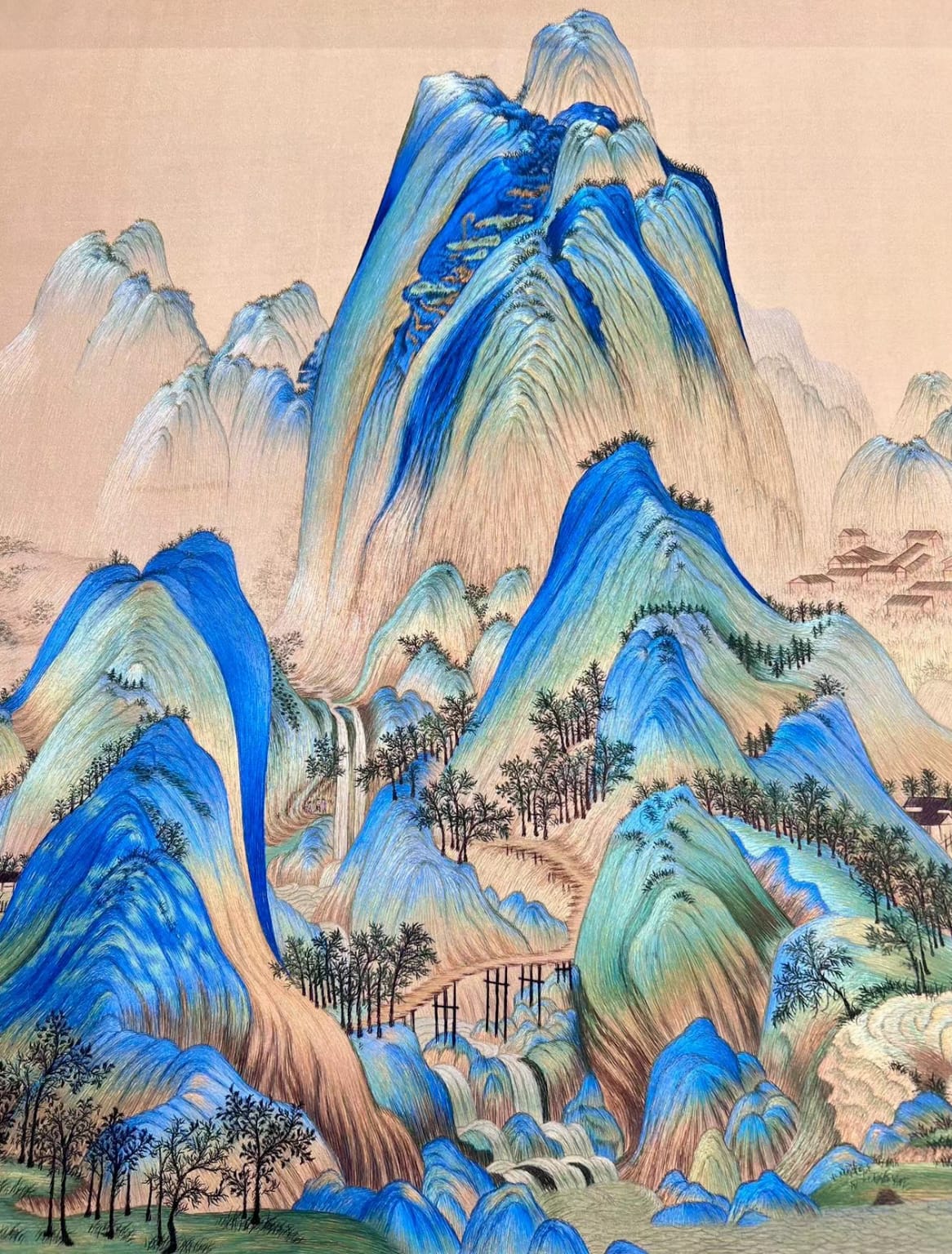

Suzhou Embroidery, or Su Xiu, is one of China’s most famous traditional embroidery styles. Originating from Suzhou, this intricate craft dates back over a thousand years and is renowned for its delicate techniques and exquisite artistry.
- Characteristics: Suzhou embroidery is known for its fine, detailed stitches and vibrant colors. Artists use a variety of stitches to create lifelike images of flowers, birds, and landscapes, often with a three-dimensional effect.
- Products: You can find Suzhou embroidery in various forms, including framed art, decorative pillows, silk scarves, and clothing. Each piece showcases the skill and artistry of the embroiderers.
- Quality: The craftsmanship involved in Suzhou embroidery is meticulous, often requiring hundreds of hours to complete a single piece. The result is a beautiful and durable artwork that represents traditional Chinese culture.
Hangzhou Silk
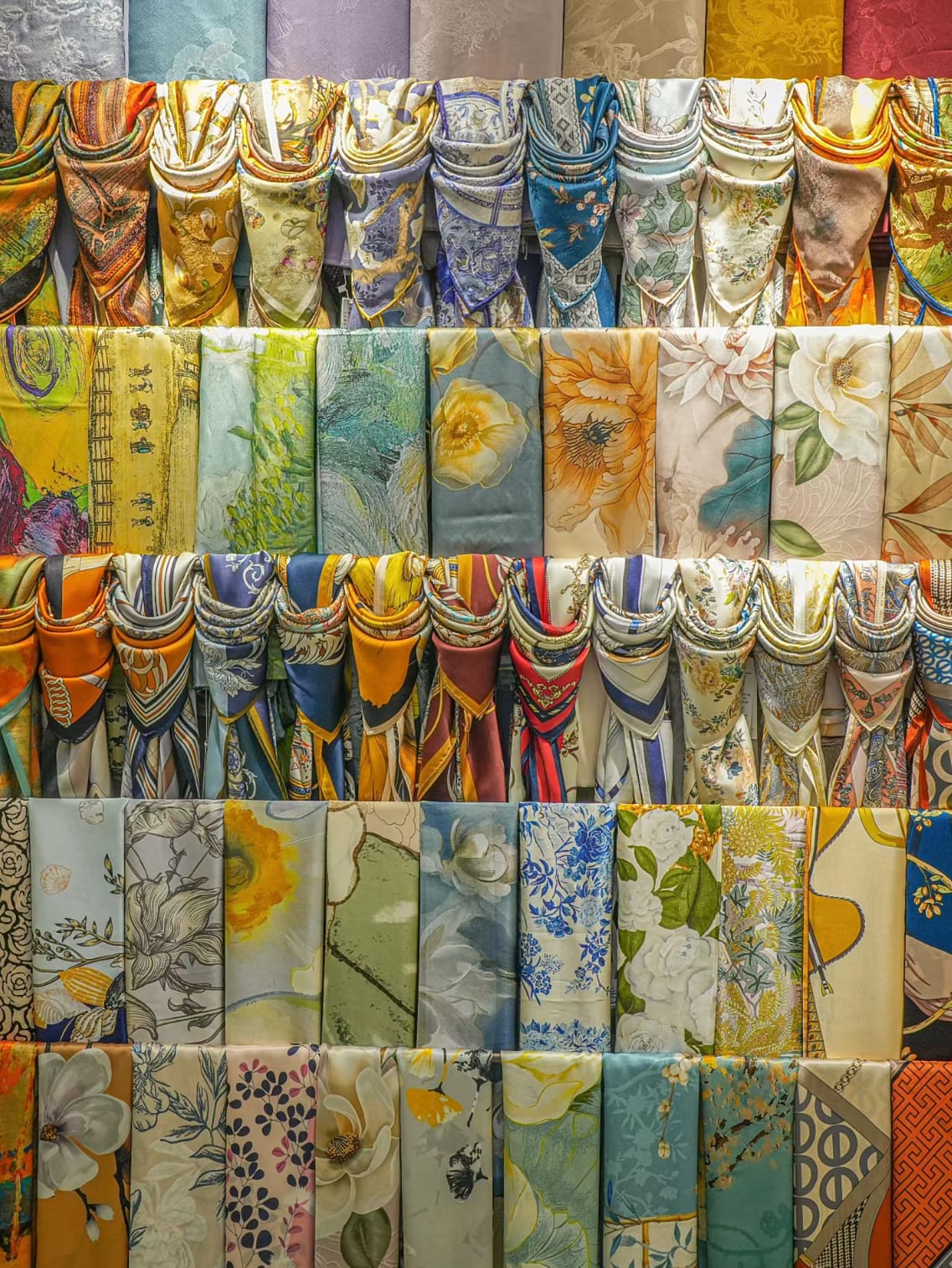
Hangzhou Silk is renowned for its high quality and luxurious texture. Hangzhou, located in Zhejiang Province, has been a center for silk production for centuries, and its silk products are celebrated for their elegance and craftsmanship.
- Characteristics: Hangzhou silk is known for its smooth texture, lustrous finish, and vibrant colors. It is often used in high-end clothing and accessories, such as scarves, ties, and dresses.
- Products: Common silk items from Hangzhou include elegant silk scarves, beautiful silk robes, and intricate silk paintings. These items often feature traditional Chinese patterns and designs.
- Quality: The silk from Hangzhou is made from fine silk threads that are carefully woven to produce a soft and durable fabric. The craftsmanship involved in creating Hangzhou silk ensures that each product is of exceptional quality.
